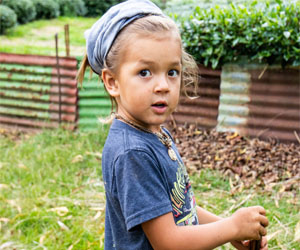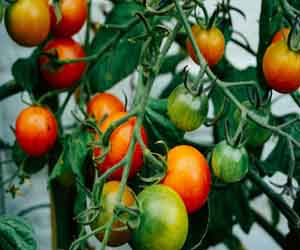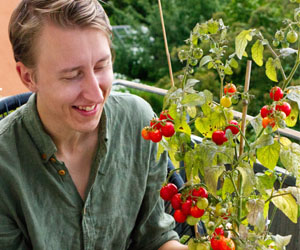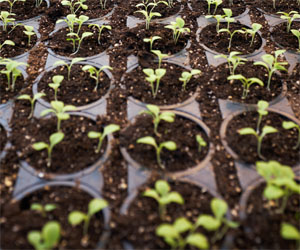


The Dynamics Of Growth And Development

Growth and development are two intricately linked processes that shape our lives from the moment we are conceived to the day we take our last breath. These concepts extend beyond physical changes; they encompass cognitive, emotional, and social transformations. In this article, we'll explore the fascinating world of growth and development, highlighting their significance and the factors that influence them.
Defining Growth And Development
Growth and development are often used interchangeably, but they have distinct meanings in various contexts. Growth primarily refers to the physical changes that occur throughout an individual's lifespan, such as increases in height, weight, and the size of body parts. Development, on the other hand, encompasses a broader spectrum of changes, including cognitive, emotional, and social progress. It involves the acquisition of skills, knowledge, and maturity.
Physical Growth
Physical growth is most evident during infancy and adolescence. During infancy, babies experience rapid physical growth, leading to significant weight gain and a noticeable increase in length. In adolescence, a growth spurt occurs, contributing to the dramatic changes in height and the development of secondary sexual characteristics.
Cognitive Development
Cognitive development is the process of acquiring knowledge, reasoning abilities, problem-solving skills, and language proficiency. Jean Piaget's theory of cognitive development identifies stages of development, from the sensorimotor stage in infancy to the formal operational stage in adolescence. This progression reflects the increasing complexity of thought processes and problem-solving abilities.
Emotional And Social Development
Emotional and social development is equally critical. Erik Erikson's psychosocial stages of development outline the challenges individuals face at different life stages. Emotional intelligence, the ability to recognize, understand, and manage one's own emotions, plays a vital role in social development, enabling individuals to form healthy relationships and navigate complex social situations.
Factors Influencing Growth And Development
Numerous factors influence the trajectory of growth and development, including genetics, nutrition, environmental factors, and socio-economic conditions. Genetic factors establish the baseline for an individual's growth potential, while nutrition plays a pivotal role in physical and cognitive development. Malnutrition during critical periods can lead to stunted growth and cognitive impairments.
Environmental factors, such as exposure to toxins and pollutants, can have detrimental effects on both physical and cognitive development. In contrast, enriching environments with access to education, healthcare, and social support systems foster positive growth and development.
The Lifelong Journey
Growth and development are not confined to childhood and adolescence; they continue throughout our lives. Adulthood and old age bring their own unique stages and challenges. In adulthood, individuals continue to develop their careers, relationships, and personal identities. In old age, the focus may shift towards reminiscing, life reflection, and coming to terms with mortality.
Growth and development are lifelong processes that shape our bodies, minds, and relationships. They are influenced by a complex interplay of genetics, environment, and personal experiences. Understanding these processes is essential for promoting healthy development in individuals and societies. It underscores the importance of providing children with nurturing environments, supporting adults in their personal and professional growth, and respecting the unique journey of each person as they navigate the ever-changing landscape of life.
Embracing Minimalism For A More Fulfilling Life
 3. Simplify Your Wardrobe
3. Simplify Your Wardrobe
A minimalist wardrobe typically consists of versatile, timeless pieces that can be mixed and matched. This not only makes getting dressed in the morning easier but also reduces the time and money spent on clothing. A smaller wardrobe can be more reflective of your personal style and eliminate the stress of decision fatigue.
4. Quality Over Quantity
In a world where we are often encouraged to buy more for less, minimalism emphasizes the importance of quality over quantity. Instead of opting for numerous inexpensive items, invest in high-quality products that are built to last. This not only reduces waste but also leads to a more cost-effective and satisfying life in the long run.
5. Mindful Consumption
Minimalism promotes mindful consumption. Before making a purchase, think about whether the item aligns with your values and needs. Consider whether it will enhance your life or merely contribute to clutter. Being mindful of what you bring into your life can lead to more intentional and fulfilling choices.
6. Reduced Environmental Impact
By living with less and consuming mindfully, minimalism can have a positive impact on the environment. Reducing waste, conserving resources, and making eco-friendly choices are intrinsic to this way of life, which ultimately contributes to a more sustainable planet.


Cultivating Your Green Thumb
 Select Easy-To-Grow Plants: As a beginner, it's wise to start with plants that are known for their resilience and forgiving nature. Some easy-to-grow choices include tomatoes, basil, marigolds, and zinnias. These plants are relatively low-maintenance and can be quite forgiving of minor mistakes.
Select Easy-To-Grow Plants: As a beginner, it's wise to start with plants that are known for their resilience and forgiving nature. Some easy-to-grow choices include tomatoes, basil, marigolds, and zinnias. These plants are relatively low-maintenance and can be quite forgiving of minor mistakes.
Quality Soil Is Key: Healthy soil is the foundation of a successful garden. Invest in good-quality potting mix or amend your garden soil with organic matter like compost to improve its fertility and structure.
Learn About Watering: Overwatering and underwatering are common mistakes for beginners. Research the specific watering needs of your plants. Most plants prefer even, consistent moisture, but some drought-tolerant varieties may require less frequent watering.
Gardening Tools: Acquire a few essential gardening tools, including a trowel, hand pruners, a watering can or hose, and gardening gloves. These tools will make your gardening tasks much easier.
A Step Toward Sustainable Living
 Why Environmentally Mindful Cleaning Matters
Why Environmentally Mindful Cleaning Matters
Traditional cleaning products often contain harsh chemicals and synthetic fragrances that can have adverse effects on our health and the environment. These chemicals, when washed down the drain, find their way into waterways, harming aquatic life and affecting the quality of our drinking water. Moreover, indoor air pollution caused by the release of volatile organic compounds (VOCs) from cleaning products can lead to respiratory problems and other health issues.
Environmentally mindful cleaning is about recognizing the interconnectedness of our actions. It's not just about making our immediate surroundings cleaner; it's about preserving the planet for future generations. By making eco-conscious choices in our cleaning routines, we can significantly reduce our ecological footprint and contribute to a healthier world.
The Green Cleaning Revolution
The shift towards environmentally mindful cleaning practices has given rise to a green cleaning revolution. This movement encourages the use of natural, non-toxic, and sustainable alternatives to conventional cleaning products. Some of the key elements of this revolution include:
Natural Ingredients: Many common household items like vinegar, baking soda, lemon juice, and essential oils can serve as powerful cleaning agents. They are safe, effective, and readily available.
Reducing Plastic Waste: Eco-friendly cleaning often involves the use of refillable and reusable containers, reducing the need for single-use plastic bottles that can take hundreds of years to decompose.
 Growing your own food is not just a trend; it's a way of life that offers a plethora of benefits for individuals, communities, and the planet.
Growing your own food is not just a trend; it's a way of life that offers a plethora of benefits for individuals, communities, and the planet.
The Resurgence Of Home Gardening
In recent years, there has been a significant resurgence in home gardening. People from all walks of life are rediscovering the joy and satisfaction that comes with nurturing a garden and producing their food. Whether you have a sprawling backyard or just a tiny balcony, there's a way to grow something that will grace your table with fresh, homegrown flavors.
The Joys Of Growing Your Own Food
One of the most immediate and rewarding aspects of growing your own food is the connection you establish with the earth. As you till the soil, plant seeds, and watch your crops grow, you become part of the natural world's cycles. The joy of seeing a tiny seed sprout into a thriving plant and, eventually, bearing fruits or vegetables is a deeply gratifying experience. It's a tangible connection to the earth's rhythms.
Nutrition And Health Benefits
Homegrown produce is not only delicious but also healthier. You have control over what goes into your garden, which means you can choose to grow organic, pesticide-free food. This translates into fresh, nutrient-rich produce that you can pick at the peak of ripeness, ensuring the highest levels of vitamins and minerals. Additionally, the physical activity and fresh air involved in gardening contribute to a healthier lifestyle.
Environmental Impact
Growing your own food is a sustainable and environmentally friendly practice. It reduces the carbon footprint associated with the transportation and packaging of commercially grown produce. Home gardens can also serve as biodiversity hubs, attracting pollinators and beneficial insects, contributing to the health of local ecosystems.
The Power Of Precision Agriculture
 Precision agriculture is an innovative approach to farming that utilizes technology to precisely manage resources and make data-driven decisions throughout the agricultural process. It involves the application of various technologies, including satellite imagery, GPS systems, sensors, and data analytics, to monitor and control the variables affecting crop growth, animal husbandry, and farm operations.
Precision agriculture is an innovative approach to farming that utilizes technology to precisely manage resources and make data-driven decisions throughout the agricultural process. It involves the application of various technologies, including satellite imagery, GPS systems, sensors, and data analytics, to monitor and control the variables affecting crop growth, animal husbandry, and farm operations.
Maximizing Resource Efficiency
One of the primary objectives of precision agriculture is to maximize the efficient use of resources. By collecting and analyzing data on soil health, weather conditions, and crop performance, farmers can make informed decisions regarding irrigation, fertilization, and pest control. This not only results in cost savings but also reduces the environmental impact of farming by minimizing the use of water, energy, and chemicals.
Data-Driven Decision Making
The heart of precision agriculture is data. Farmers collect a wealth of information from various sources, such as drones, sensors, and satellite imagery. This data is then processed and analyzed to provide valuable insights. These insights enable farmers to tailor their actions to the specific needs of their fields, crops, or livestock. For example, sensors can monitor soil moisture levels, helping farmers determine when and where to irrigate, while drones can provide a bird's-eye view of crop health, allowing for targeted interventions.
Enhancing Crop Yield And Quality
Precision agriculture has a direct impact on crop yield and quality. By ensuring that crops receive the precise amount of water, nutrients, and care they need, farmers can significantly increase production. Moreover, by minimizing stressors such as pests and diseases through early detection and targeted treatments, crop quality improves, reducing the need for post-harvest chemicals and additives.